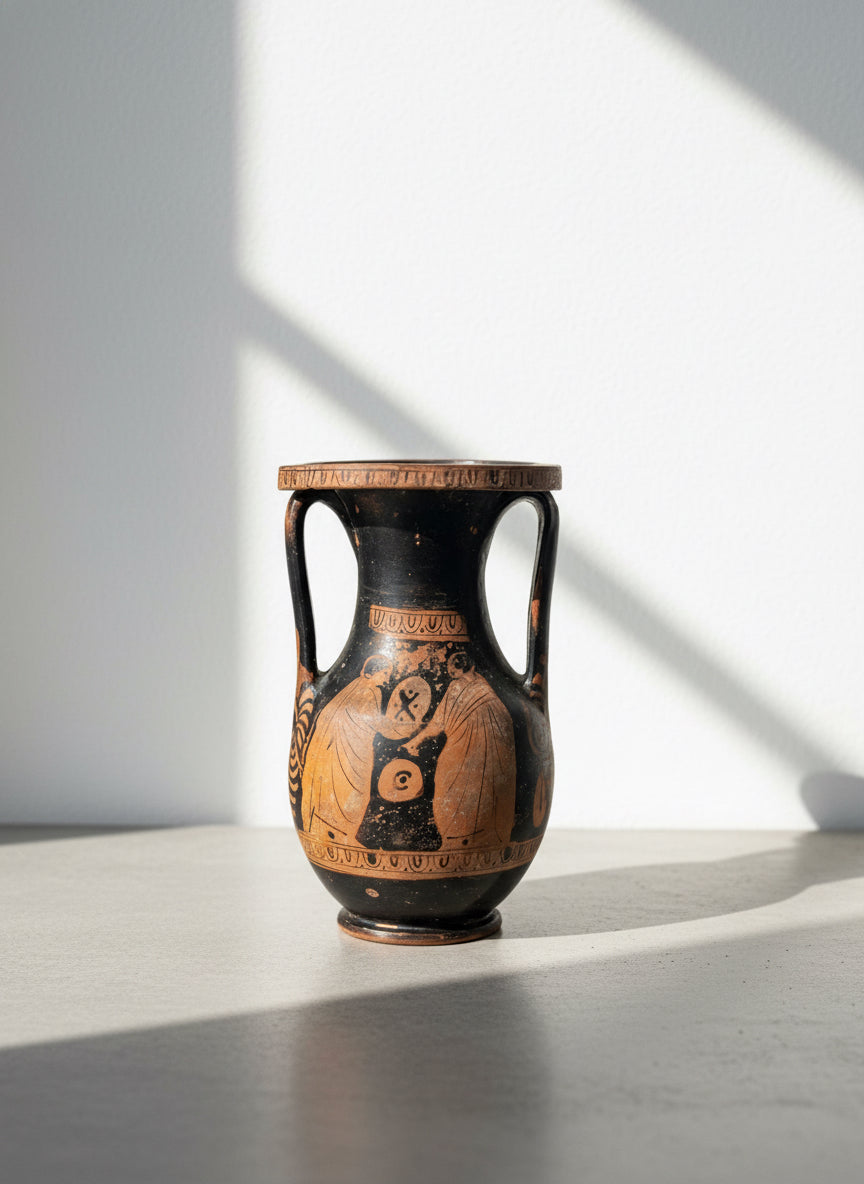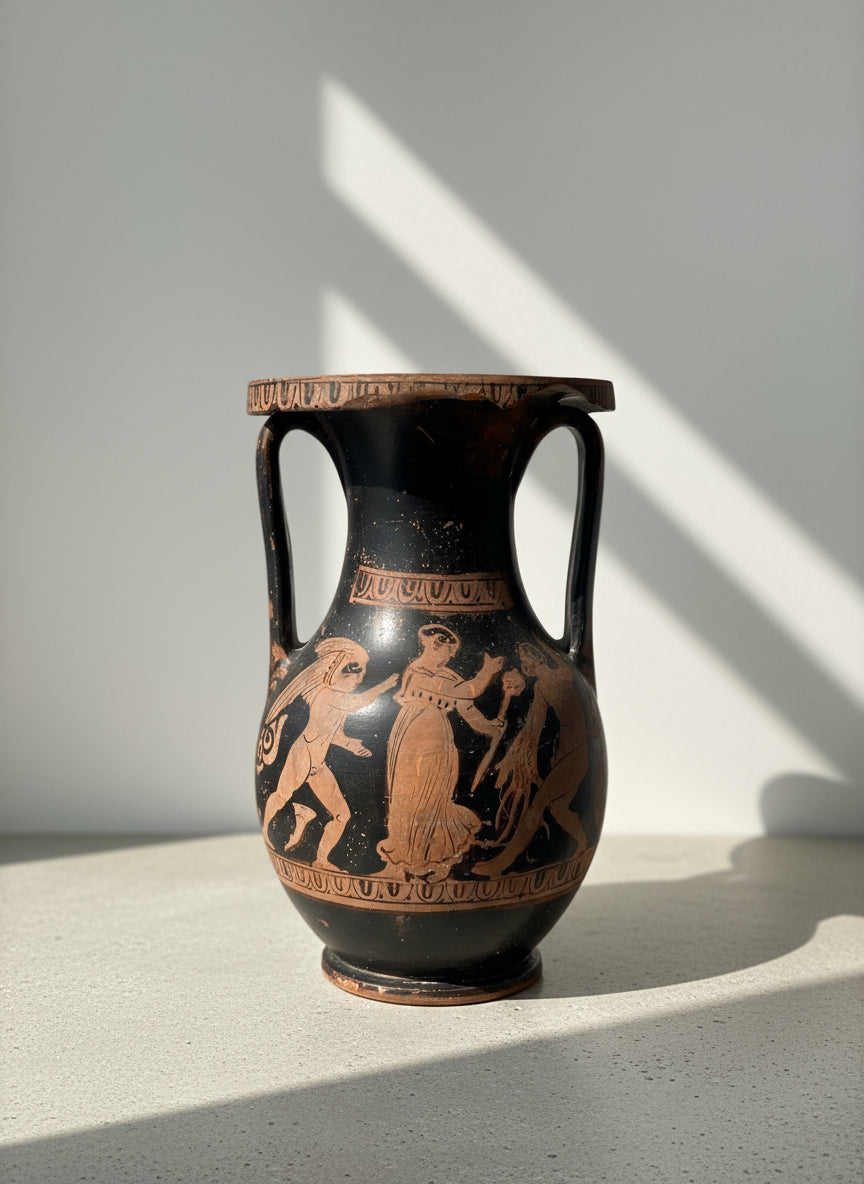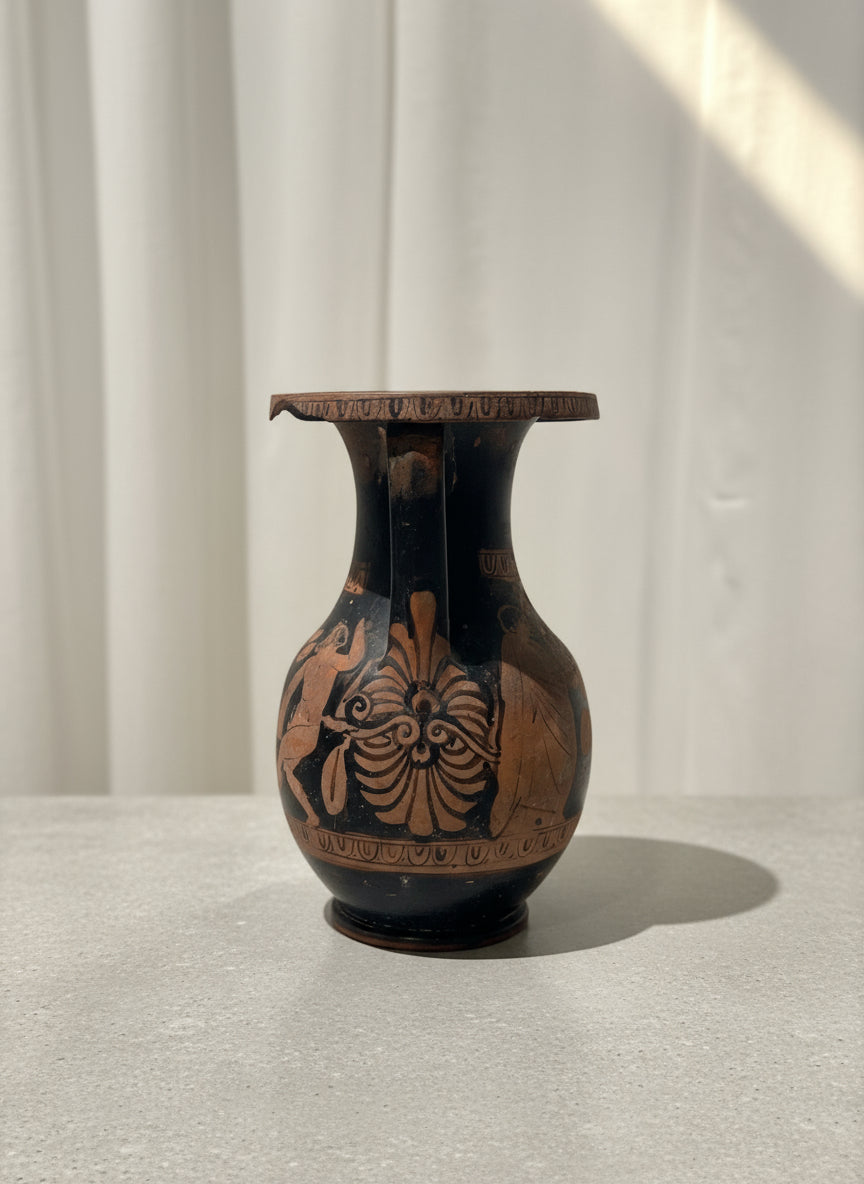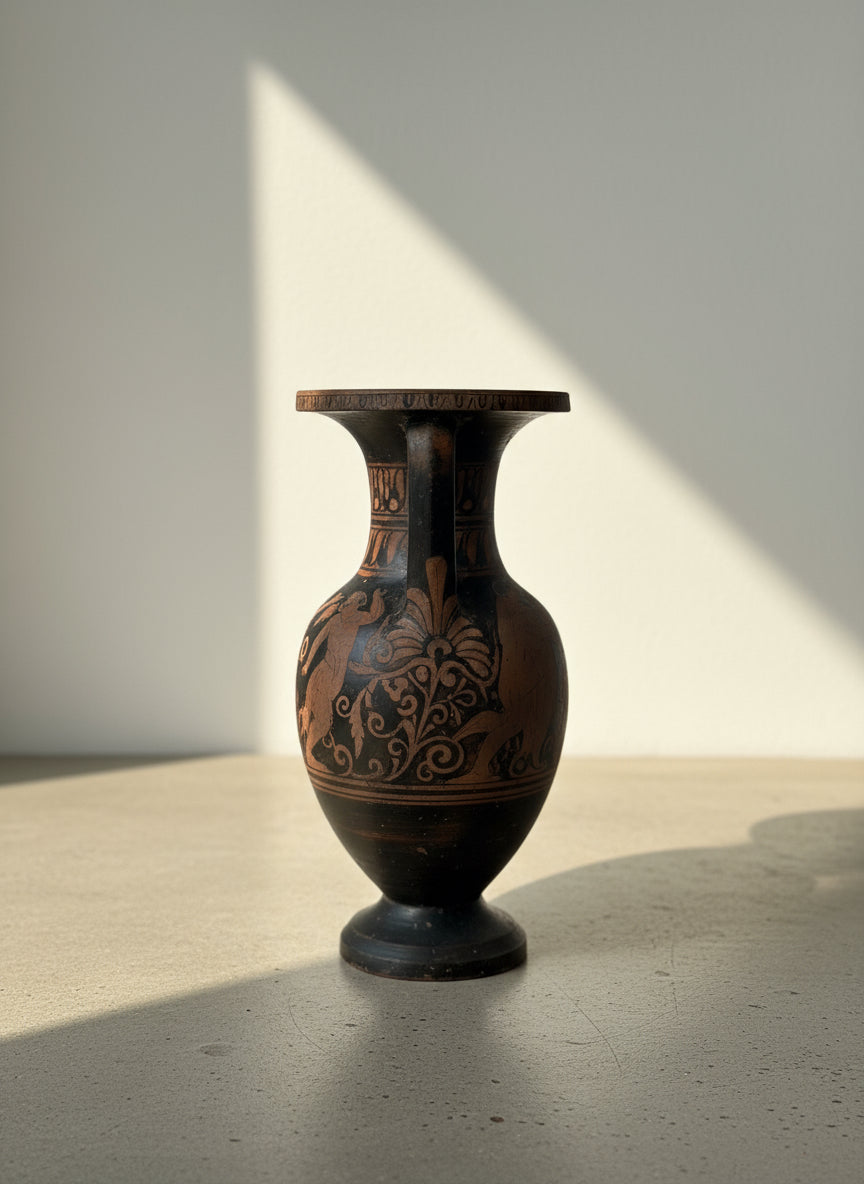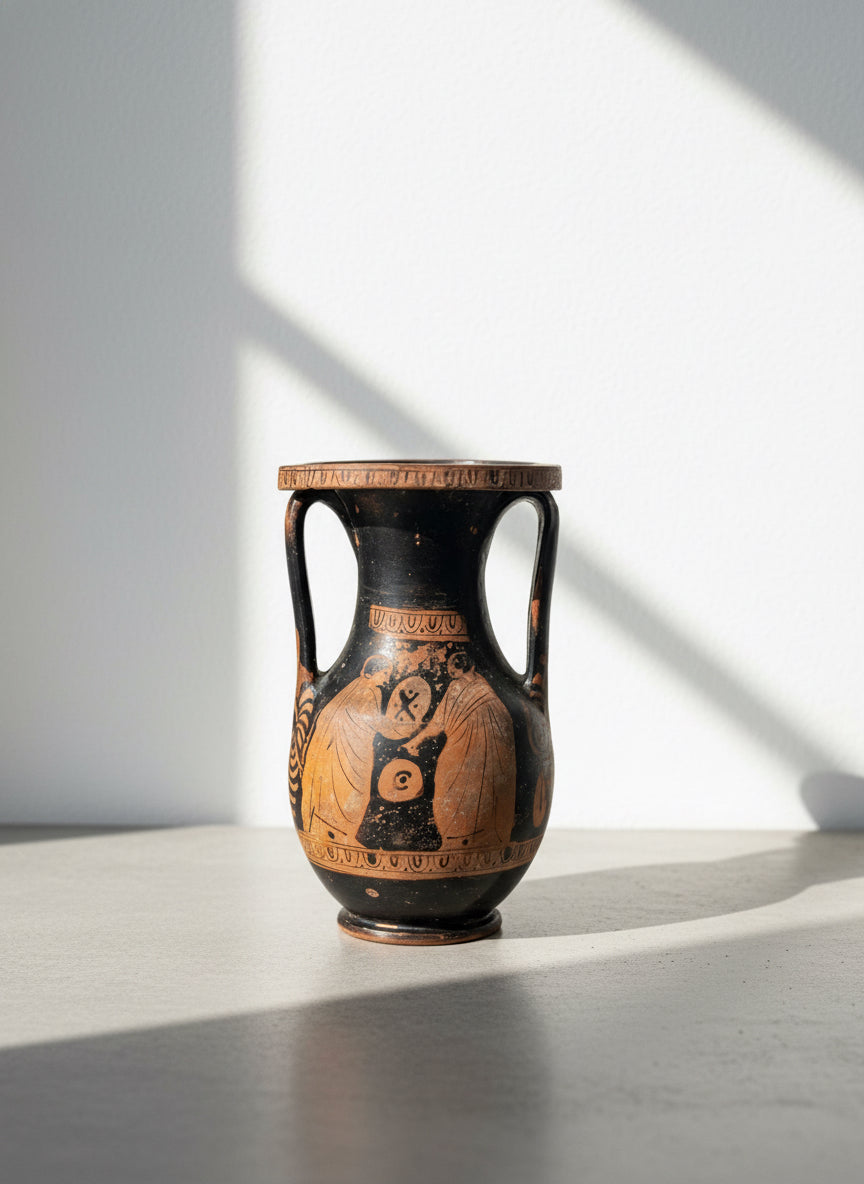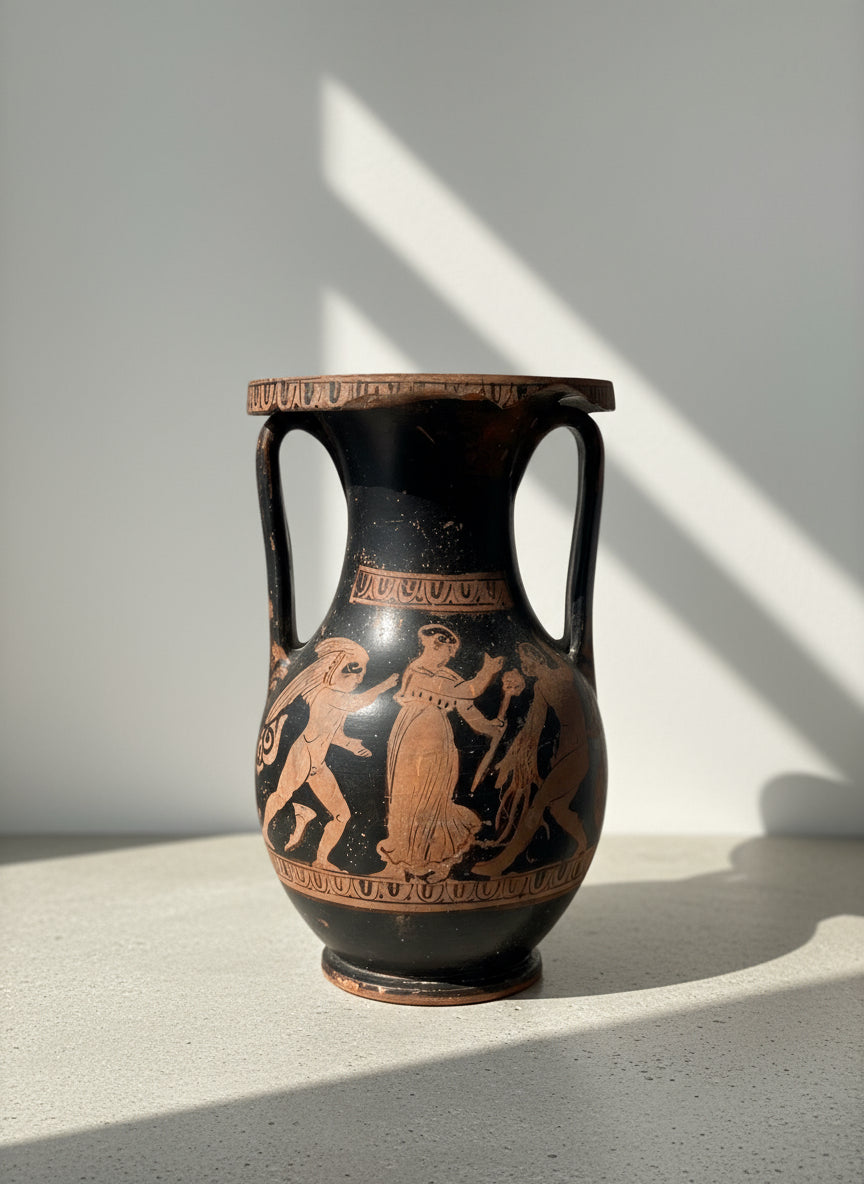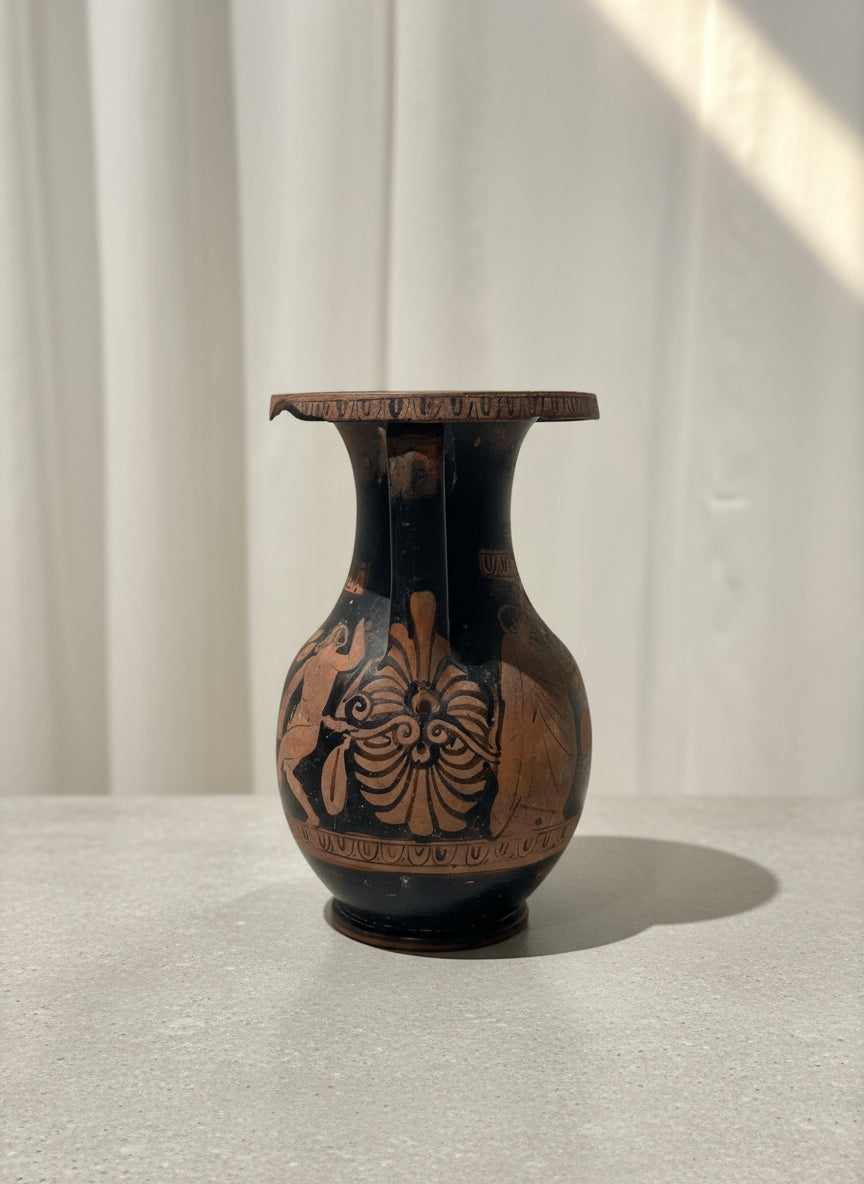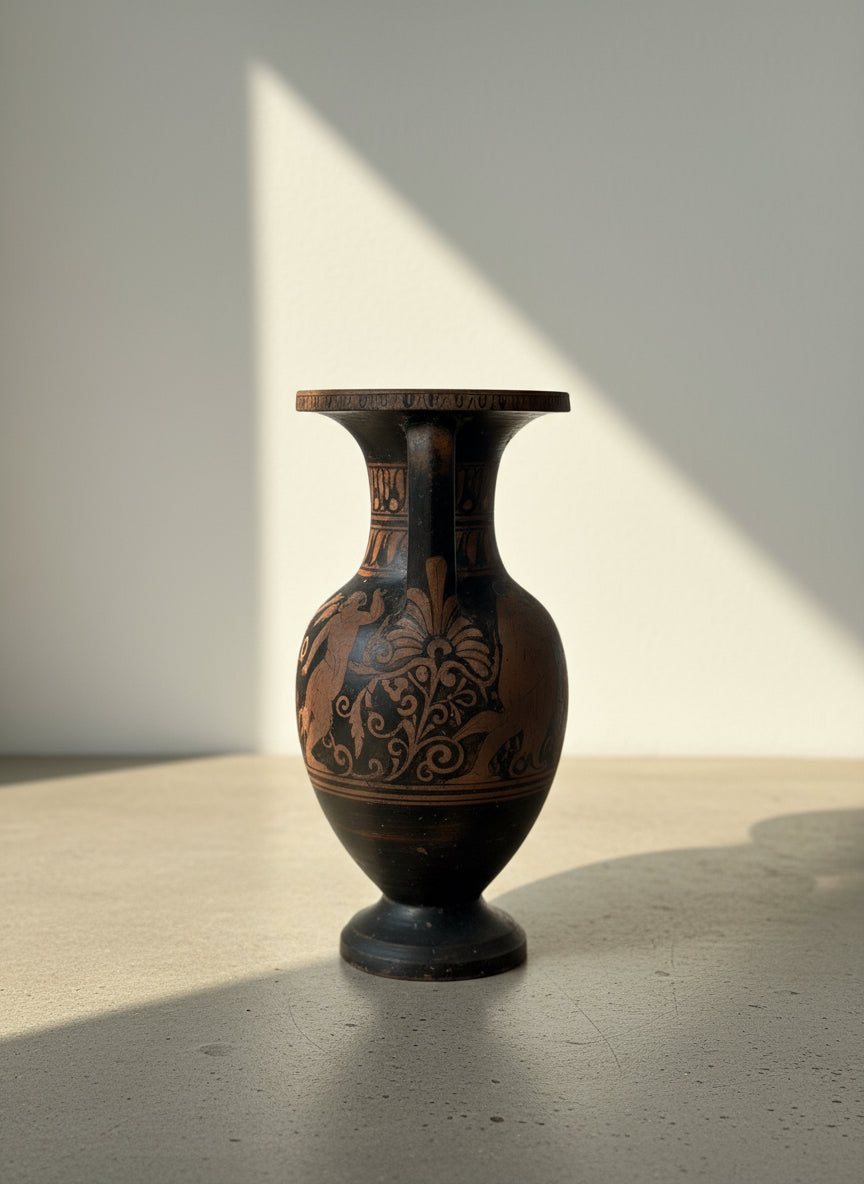HOMMES + GARDENS
Ancient Greek Red-Figure Terracotta Pelike (Jar), 5th–4th Century BCE
Ancient Greek Red-Figure Terracotta Pelike (Jar), 5th–4th Century BCE
Presenting an exquisite ancient Greek red-figure terracotta pelike (storage jar) standing 26 cm tall. This piece embodies the timeless artistry of Classical Greece, featuring hand-painted figural motifs in the iconic red-figure style (red images against a black background) . A pelike is a type of one-piece ceramic vessel similar to an amphora, with a broad, almost spherical body and a flat base so it can stand upright . Such jars were often used to store wine or oil, and were typically adorned with intricate scenes of mythology or daily life . Crafted circa 5th–4th century BCE (likely in Athens or Magna Graecia, Southern Italy ), this pelike offers a tangible connection to the ancient world. Its classical artistry, historical significance, and collectible appeal make it a standout addition for discerning collectors.
Classical Artistry & Craftsmanship
This terracotta jar is a showcase of classical Greek craftsmanship. The red-figure technique – invented in Athens around 525 BCE – allowed ancient artists to paint detailed figures with a brush, achieving greater realism and expressive detail than the earlier black-figure style . On this pelike, the artist rendered lively figural scenes in the natural red-orange of the clay, set against a lustrous black slip background. You can admire the fine outlines and interior details that bring the characters to life – a testament to the skill of the vase-painters who expertly wielded this technique. The vessel’s form is elegant and balanced: a plump body, narrow neck, flared mouth, and twin handles, all proportions carefully executed. Classic Greek decorative motifs likely embellish the jar (such as palmette designs near the handles or meander key patterns along the borders), framing the narrative scenes and adding to its visual appeal. This level of artistry was not only aesthetically pleasing but also reflected the cultural storytelling of its time, making the pelike both a functional item and a work of art.
Historical Significance
Owning this pelike means holding a piece of ancient history. Pelikai (plural) were produced during the Classical period of Greece, roughly between the late 6th and 4th centuries BCE . They appear in archaeological records from Athens to the Greek colonies of South Italy, indicating they were commonly used and traded across the Mediterranean . The very shape and style of this jar are emblematic of that era’s daily life and ceremonial practices. A pelike like this would have been used to store or pour wine at symposia (banquets) or oil for household and religious purposes . The scenes depicted on red-figure vases often tell stories – perhaps of gods, heroes, or everyday activities – serving as a window into ancient Greek mythology and society. By the 4th century BCE, South Italian (Apulian) workshops were flourishing, creating vessels just like this one for local use and export. This jar, therefore, is not only a beautiful decorative object; it’s a cultural artifact that has survived over two millennia. Its preservation allows us to connect with the worldview and artistic expression of a long-past civilization, underscoring its historical importance.
Condition & Preservation
Condition: The pelike is in good antique condition, with some rim damage but otherwise intact. There is a minor chip and wear along the rim edge (consistent with age and use), but no significant cracks or structural repairs. The body remains fully intact, which is remarkable for a ceramic of this age. The original painted surfaces are well-preserved, still showing impressive detail in the figures and decorative borders. The black glaze has aged to a warm, slightly iridescent patina in places, attesting to its ancient origin. Aside from the mentioned rim flaw, the vessel stands sturdy and displays beautifully. Collectors will appreciate that much of the original pigment and form are retained, allowing the piece to be enjoyed in nearly its ancient glory. (Any minor abrasions or encrustations are typical for excavated pottery and do not detract from the overall presentation.) This level of preservation – largely intact with only minor wear – means the pelike can be safely handled (with care) and exhibited. We value transparency, so while there is no formal provenance documentation accompanying this jar (it has been part of a private collection without recorded history), its authenticity and age are evident in the craftsmanship, materials, and natural aging. Serious buyers are welcome to examine it or request additional details to verify its authenticity. In short, this piece has withstood the test of time, and its condition today allows us to fully appreciate the ancient artisan’s skill.
Collectible Appeal
Ancient Greek vases are among the most sought-after antiquities, and this red-figure pelike is a prime collectible for several reasons. First, it represents a quintessential form of Greek pottery – ideal for display on a shelf or pedestal, where it can be admired from all sides. The red-figure style, with its striking contrast of black and red, is instantly recognizable and highly prized by collectors and historians alike. Such pieces frequently feature in museum collections, and owning one offers a museum-like experience in your own space. This jar’s aesthetic beauty, combined with its historical context, makes it a conversation piece that bridges art and history. For collectors of classical antiquities, a well-preserved pelike is a cornerstone piece – it exemplifies the height of ceramic art in antiquity. Additionally, genuine artifacts of this kind are increasingly scarce on the market, especially in mostly intact condition. Its authenticity (as a piece crafted over 2,300 years ago) provides not just decorative appeal but also investment potential; antiquities of notable quality have historically maintained or increased their value as collectibles. This pelike’s mix of artistic merit and historical intrigue ensures it will stand out in any collection, be it alongside other ancient artifacts or as a focal point in an eclectic art assemblage. It’s an ideal acquisition for those who appreciate the legacy of classical art and wish to preserve it for future generations.
Couldn't load pickup availability
Share
